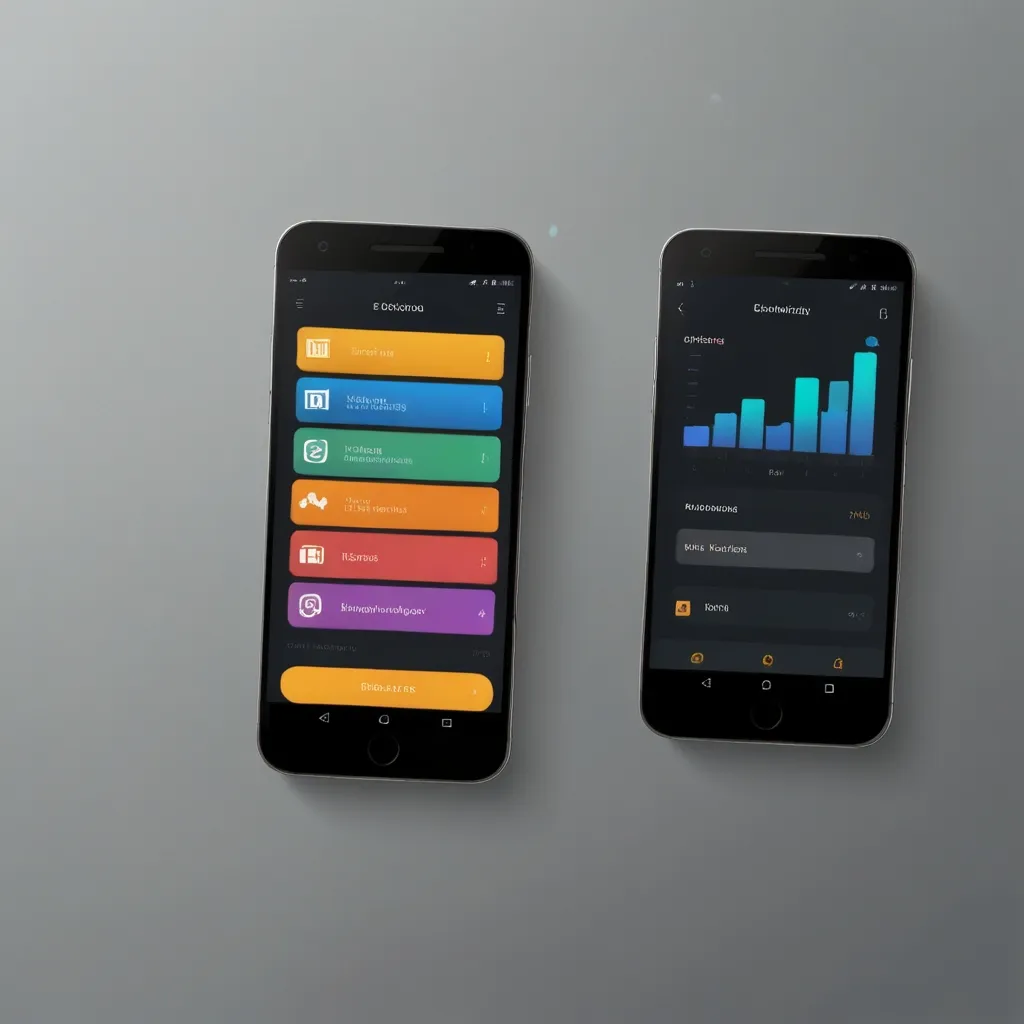Feature flags have completely transformed how I deploy and test new features in production. After implementing them across several major applications, I’ve found they provide unparalleled control over feature releases while minimizing risk. In this article, I’ll share practical insights on creating a robust feature flag system based on my experience and industry best practices.
Understanding Feature Flags
Feature flags (or toggles) are a development technique that allows teams to modify system behavior without changing code. They act as conditional statements surrounding code blocks that represent features, enabling or disabling functionality based on various criteria.
The primary benefit is risk mitigation. Rather than deploying large changes at once, teams can gradually expose features to users and quickly disable problematic code without rolling back entire deployments.
// Basic feature flag example
if (featureFlags.isEnabled('new-search-algorithm')) {
// New search code
} else {
// Old search code
}
Core Feature Flag Concepts
Feature flags typically fall into several categories:
- Release flags: Temporary flags for deploying incomplete features safely
- Experiment flags: For A/B testing different implementations
- Ops flags: For controlling operational aspects like maintenance modes
- Permission flags: For enabling features based on user permissions
The lifetime of these flags varies significantly. Some exist for days during a rollout, while others might be permanent parts of your permission system.
Building a Feature Flag Architecture
A complete feature flag system consists of:
- A storage mechanism for flag configurations
- Evaluation logic to determine if a flag is on/off for a user
- Client libraries to check flags in your application code
- An administration interface to manage flags
Let’s start by building a simple feature flag service:
class FeatureFlagService {
constructor(config = {}) {
this.flags = config.flags || {};
this.user = config.user || {};
this.storage = config.storage || new LocalStorageAdapter();
}
isEnabled(flagName, defaultValue = false) {
// Get flag definition
const flag = this.flags[flagName];
if (!flag) return defaultValue;
// Simple boolean flag
if (typeof flag.enabled === 'boolean') {
return flag.enabled;
}
// User targeting
if (flag.userIds && this.user.id) {
if (flag.userIds.includes(this.user.id)) {
return true;
}
}
// Percentage rollout
if (typeof flag.percentage === 'number') {
const hash = this.getUserHash(this.user.id, flagName);
return (hash % 100) < flag.percentage;
}
return defaultValue;
}
getUserHash(userId, flagName) {
if (!userId) return Math.random() * 100;
// Create deterministic hash for consistent user experience
let hash = 0;
const str = userId + flagName;
for (let i = 0; i < str.length; i++) {
hash = ((hash << 5) - hash) + str.charCodeAt(i);
hash |= 0; // Convert to 32bit integer
}
return Math.abs(hash % 100);
}
async initialize() {
try {
const storedFlags = await this.storage.getFlags();
this.flags = {...this.flags, ...storedFlags};
return true;
} catch (error) {
console.error('Failed to initialize feature flags:', error);
return false;
}
}
}
This service handles the core functionality of evaluating whether a feature is enabled for a specific user.
Flag Storage Strategies
The choice of storage mechanism depends on your application’s requirements:
// Sample storage adapters
class LocalStorageAdapter {
async getFlags() {
try {
const flags = localStorage.getItem('featureFlags');
return flags ? JSON.parse(flags) : {};
} catch (e) {
console.error('Error reading flags from localStorage', e);
return {};
}
}
async saveFlags(flags) {
try {
localStorage.setItem('featureFlags', JSON.stringify(flags));
return true;
} catch (e) {
console.error('Error saving flags to localStorage', e);
return false;
}
}
}
class ApiStorageAdapter {
constructor(apiUrl) {
this.apiUrl = apiUrl;
}
async getFlags() {
try {
const response = await fetch(`${this.apiUrl}/feature-flags`);
if (!response.ok) throw new Error('Failed to fetch flags');
return await response.json();
} catch (e) {
console.error('Error fetching flags from API', e);
return {};
}
}
}
For enterprise applications, I’ve found that a dedicated database with caching provides the best performance and reliability.
Implementation Patterns
Server-Side Implementation
On the server side, feature flags are typically easier to implement:
// Node.js Express middleware example
const featureFlagMiddleware = (flagService) => {
return (req, res, next) => {
// Attach flag service to request object
req.featureFlags = flagService;
// Set user context if authenticated
if (req.user) {
req.featureFlags.setUser(req.user);
}
// Add helper to response locals for template rendering
res.locals.featureEnabled = (flagName, defaultValue = false) => {
return req.featureFlags.isEnabled(flagName, defaultValue);
};
next();
};
};
// Usage in route
app.get('/search', (req, res) => {
if (req.featureFlags.isEnabled('enhanced-search')) {
return enhancedSearch(req, res);
}
return standardSearch(req, res);
});
// Usage in template (example with EJS)
// <% if (featureEnabled('new-header')) { %>
// <header class="new-design">...</header>
// <% } else { %>
// <header class="current-design">...</header>
// <% } %>
Client-Side Implementation
Client-side feature flags add complexity but provide greater flexibility:
// React Context example
const FeatureFlagContext = React.createContext({
isEnabled: () => false
});
function FeatureFlagProvider({ children, initialFlags, user }) {
const [flagService] = React.useState(() =>
new FeatureFlagService({ flags: initialFlags, user })
);
React.useEffect(() => {
flagService.initialize();
}, [flagService]);
return (
<FeatureFlagContext.Provider value={flagService}>
{children}
</FeatureFlagContext.Provider>
);
}
// Feature flag hook
function useFeatureFlag(flagName, defaultValue = false) {
const flagService = React.useContext(FeatureFlagContext);
return flagService.isEnabled(flagName, defaultValue);
}
// Feature guarded component
function FeatureFlag({ name, fallback = null, children }) {
const enabled = useFeatureFlag(name);
if (!enabled) return fallback;
return children;
}
// Usage
function App() {
return (
<FeatureFlagProvider
initialFlags={window.__INITIAL_FLAGS__}
user={window.__USER__}
>
<Navigation />
<FeatureFlag name="new-dashboard">
<NewDashboard />
</FeatureFlag>
<FeatureFlag name="new-footer" fallback={<OldFooter />}>
<NewFooter />
</FeatureFlag>
</FeatureFlagProvider>
);
}
Advanced Targeting Strategies
Simple on/off flags are just the beginning. More sophisticated targeting enables powerful use cases:
// Advanced flag evaluation
isEnabled(flagName, defaultValue = false) {
const flag = this.flags[flagName];
if (!flag) return defaultValue;
// Rule-based evaluation
if (flag.rules && flag.rules.length > 0) {
for (const rule of flag.rules) {
if (this.evaluateRule(rule)) {
return true;
}
}
}
// User segment matching
if (flag.segments && this.user.segments) {
for (const segment of flag.segments) {
if (this.user.segments.includes(segment)) {
return true;
}
}
}
// Geographical targeting
if (flag.countries && this.user.country) {
if (flag.countries.includes(this.user.country)) {
return true;
}
}
// Percentage rollout with sticky assignment
if (typeof flag.percentage === 'number') {
const hash = this.getUserHash(this.user.id, flagName);
return (hash % 100) < flag.percentage;
}
return flag.enabled === true;
}
evaluateRule(rule) {
if (!rule.attribute || !rule.operator || rule.value === undefined) {
return false;
}
const userValue = this.user[rule.attribute];
if (userValue === undefined) return false;
switch (rule.operator) {
case 'equals': return userValue === rule.value;
case 'notEquals': return userValue !== rule.value;
case 'contains': return userValue.includes(rule.value);
case 'greaterThan': return userValue > rule.value;
case 'lessThan': return userValue < rule.value;
default: return false;
}
}
Implementing Progressive Rollouts
Gradual rollouts are a key benefit of feature flags. Here’s how to implement them:
// Progressive rollout manager
class RolloutManager {
constructor(flagService, storage) {
this.flagService = flagService;
this.storage = storage;
this.runningRollouts = new Map();
}
async startRollout(flagName, options = {}) {
const {
startPercentage = 0,
targetPercentage = 100,
incrementPercentage = 5,
intervalHours = 24,
onComplete = null
} = options;
if (this.runningRollouts.has(flagName)) {
return false;
}
const rollout = {
flagName,
currentPercentage: startPercentage,
targetPercentage,
incrementPercentage,
intervalMs: intervalHours * 60 * 60 * 1000,
startTime: Date.now(),
lastUpdateTime: Date.now(),
onComplete
};
await this.updateFlagPercentage(flagName, startPercentage);
const intervalId = setInterval(() => {
this.incrementRollout(flagName);
}, rollout.intervalMs);
rollout.intervalId = intervalId;
this.runningRollouts.set(flagName, rollout);
return true;
}
async incrementRollout(flagName) {
const rollout = this.runningRollouts.get(flagName);
if (!rollout) return;
let newPercentage = rollout.currentPercentage + rollout.incrementPercentage;
if (newPercentage >= rollout.targetPercentage) {
newPercentage = rollout.targetPercentage;
clearInterval(rollout.intervalId);
this.runningRollouts.delete(flagName);
if (rollout.onComplete) {
rollout.onComplete(flagName);
}
}
await this.updateFlagPercentage(flagName, newPercentage);
rollout.currentPercentage = newPercentage;
rollout.lastUpdateTime = Date.now();
}
async updateFlagPercentage(flagName, percentage) {
const flags = await this.storage.getFlags();
if (!flags[flagName]) {
flags[flagName] = { enabled: true };
}
flags[flagName].percentage = percentage;
await this.storage.saveFlags(flags);
this.flagService.updateFlags(flags);
}
}
Building an A/B Testing Framework
Feature flags naturally extend into A/B testing. Here’s a simple framework:
class ABTestingService {
constructor(flagService, analyticsService) {
this.flagService = flagService;
this.analyticsService = analyticsService;
this.activeTests = new Map();
this.userAssignments = new Map();
}
registerTest(testName, variants, options = {}) {
const {
userIdAttribute = 'id',
distribution = null,
sticky = true
} = options;
// Default to equal distribution
const normalizedDistribution = distribution ||
variants.map(() => 100 / variants.length);
// Ensure distribution sums to 100
const sum = normalizedDistribution.reduce((sum, val) => sum + val, 0);
if (Math.abs(sum - 100) > 0.1) {
throw new Error(`Variant distribution must sum to 100, got ${sum}`);
}
this.activeTests.set(testName, {
variants,
distribution: normalizedDistribution,
userIdAttribute,
sticky
});
return true;
}
getVariant(testName, user = null) {
const test = this.activeTests.get(testName);
if (!test) return null;
const userId = user ? user[test.userIdAttribute] : null;
// Check for pre-assigned variant if sticky
if (test.sticky && userId) {
const userTestKey = `${userId}:${testName}`;
if (this.userAssignments.has(userTestKey)) {
return this.userAssignments.get(userTestKey);
}
}
// Assign variant based on distribution
let variant;
if (userId) {
// Deterministic assignment for logged-in users
const hash = this.flagService.getUserHash(userId, testName);
variant = this.getVariantFromHash(test, hash);
} else {
// Random assignment for anonymous users
variant = this.getVariantFromHash(test, Math.random() * 100);
}
// Store assignment for sticky tests
if (test.sticky && userId) {
this.userAssignments.set(`${userId}:${testName}`, variant);
}
// Track assignment for analytics
this.trackAssignment(testName, variant, userId);
return variant;
}
getVariantFromHash(test, hash) {
let runningTotal = 0;
for (let i = 0; i < test.distribution.length; i++) {
runningTotal += test.distribution[i];
if (hash <= runningTotal) {
return test.variants[i];
}
}
return test.variants[test.variants.length - 1]; // Fallback
}
trackAssignment(testName, variant, userId) {
this.analyticsService.track('ab_test_assignment', {
testName,
variant,
userId,
timestamp: new Date().toISOString()
});
}
trackConversion(testName, conversionName, metadata = {}) {
const userId = this.flagService.user?.id;
const variant = this.getVariant(testName, this.flagService.user);
if (!variant) return false;
this.analyticsService.track('ab_test_conversion', {
testName,
conversionName,
variant,
userId,
timestamp: new Date().toISOString(),
...metadata
});
return true;
}
}
Using this framework is straightforward:
// Initialize testing service
const abTests = new ABTestingService(featureFlagService, analytics);
// Register a test with two variants and 50/50 distribution
abTests.registerTest('homepage-redesign', ['control', 'variant-a']);
// In your component
function Homepage() {
const variant = abTests.getVariant('homepage-redesign');
// Track conversion when user signs up
function handleSignup() {
abTests.trackConversion('homepage-redesign', 'signup');
// normal signup logic
}
if (variant === 'variant-a') {
return <HomepageVariantA onSignup={handleSignup} />;
}
return <HomepageControl onSignup={handleSignup} />;
}
Administration Interface
A complete feature flag system needs an admin interface. Here’s a simplified React component:
function FeatureFlagAdmin({ flagService, onSave }) {
const [flags, setFlags] = useState({});
const [loading, setLoading] = useState(true);
useEffect(() => {
async function loadFlags() {
setLoading(true);
const flags = await flagService.storage.getFlags();
setFlags(flags);
setLoading(false);
}
loadFlags();
}, [flagService]);
const handleToggleFlag = (flagName) => {
setFlags(prevFlags => {
const flag = prevFlags[flagName] || {};
return {
...prevFlags,
[flagName]: {
...flag,
enabled: !(flag.enabled === true)
}
};
});
};
const handlePercentageChange = (flagName, percentage) => {
setFlags(prevFlags => {
const flag = prevFlags[flagName] || {};
return {
...prevFlags,
[flagName]: {
...flag,
percentage: parseInt(percentage, 10)
}
};
});
};
const handleSave = async () => {
await flagService.storage.saveFlags(flags);
flagService.updateFlags(flags);
if (onSave) onSave(flags);
};
if (loading) return <div>Loading feature flags...</div>;
return (
<div className="feature-flag-admin">
<h2>Feature Flag Administration</h2>
<table>
<thead>
<tr>
<th>Flag Name</th>
<th>Status</th>
<th>Percentage</th>
<th>Actions</th>
</tr>
</thead>
<tbody>
{Object.entries(flags).map(([flagName, flag]) => (
<tr key={flagName}>
<td>{flagName}</td>
<td>
<label className="toggle">
<input
type="checkbox"
checked={flag.enabled === true}
onChange={() => handleToggleFlag(flagName)}
/>
<span className="slider"></span>
</label>
</td>
<td>
<input
type="range"
min="0"
max="100"
value={flag.percentage || 0}
onChange={(e) => handlePercentageChange(flagName, e.target.value)}
/>
<span>{flag.percentage || 0}%</span>
</td>
<td>
<button onClick={() => handlePercentageChange(flagName, 0)}>
Reset
</button>
</td>
</tr>
))}
</tbody>
</table>
<button className="save-button" onClick={handleSave}>
Save Changes
</button>
</div>
);
}
Best Practices from Experience
After implementing feature flags across several large projects, I’ve learned these key lessons:
- Keep flag evaluation logic as simple as possible for performance
- Clean up obsolete flags promptly to avoid technical debt
- Document each flag’s purpose and expected lifetime
- Design for failure - have sensible defaults if flag evaluation fails
- Cache flag values to prevent service disruptions
- Standardize naming conventions for flags
- Add monitoring and alerts for flag usage
- Implement audit logs for flag changes
For large-scale applications, consider these advanced techniques:
// Flag value caching example
class CachedFlagService extends FeatureFlagService {
constructor(config) {
super(config);
this.cache = new Map();
this.cacheTimeoutMs = config.cacheTimeoutMs || 60000;
}
isEnabled(flagName, defaultValue = false) {
const cacheKey = `${this.user.id || 'anonymous'}:${flagName}`;
// Check cache first
if (this.cache.has(cacheKey)) {
const { value, expires } = this.cache.get(cacheKey);
if (expires > Date.now()) {
return value;
}
this.cache.delete(cacheKey);
}
// Evaluate and cache result
const result = super.isEnabled(flagName, defaultValue);
this.cache.set(cacheKey, {
value: result,
expires: Date.now() + this.cacheTimeoutMs
});
return result;
}
clearCache() {
this.cache.clear();
}
}
Conclusion
Feature flags have completely changed how I approach development and deployment. Instead of stressful all-or-nothing releases, I now release code continuously and control its activation separately.
Starting small is the best approach - implement a basic feature flag system first, then gradually add capabilities as your needs grow. Even a simple implementation provides significant benefits for deployment safety and experimentation.
Remember that feature flags are more than a technical tool - they’re a methodology that connects development with product and business decisions, enabling data-driven choices about your application’s evolution.
By investing in a robust feature flag system, you’ll gain the confidence to move faster while maintaining stability - truly the best of both worlds in modern software development.






